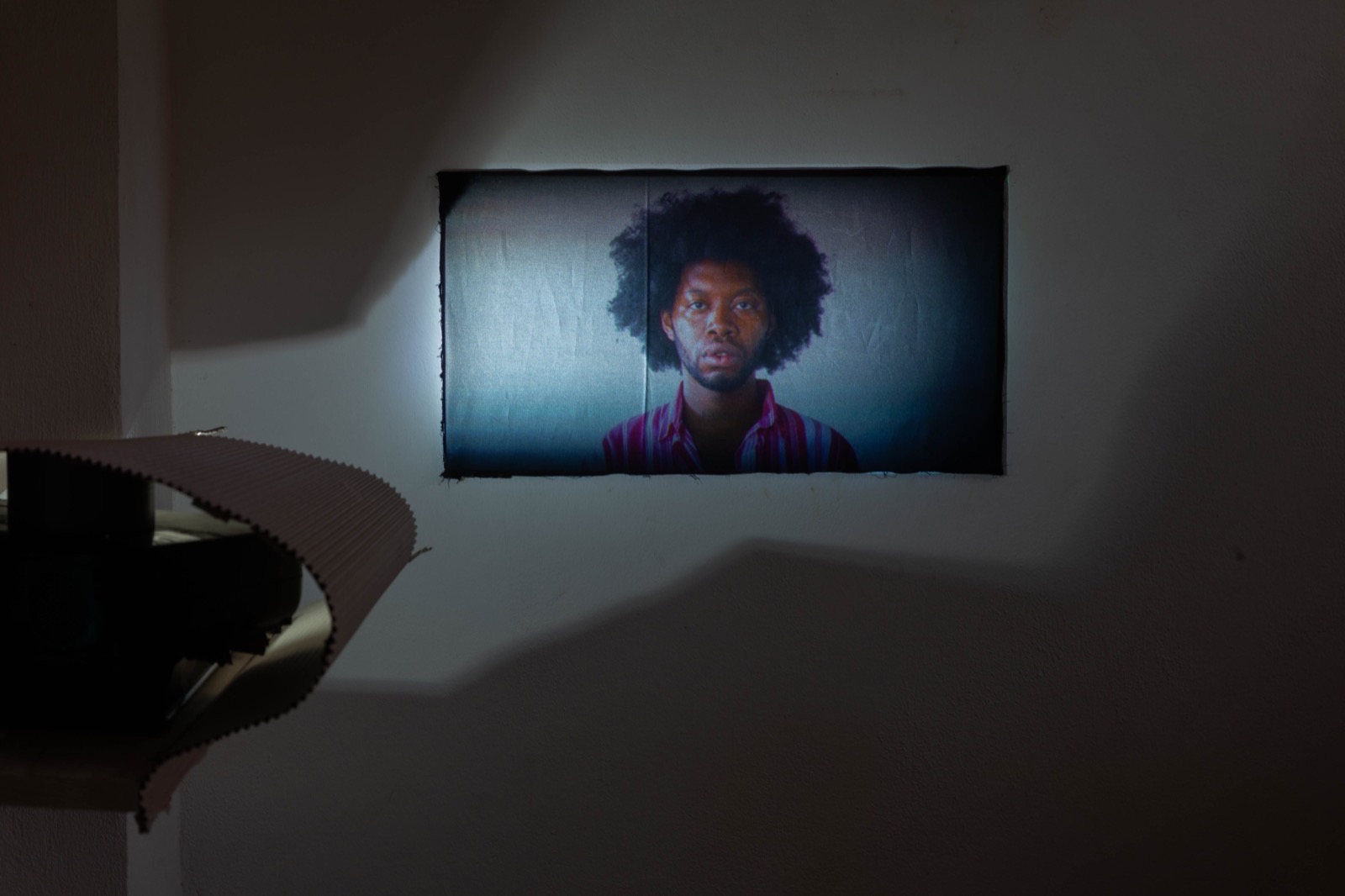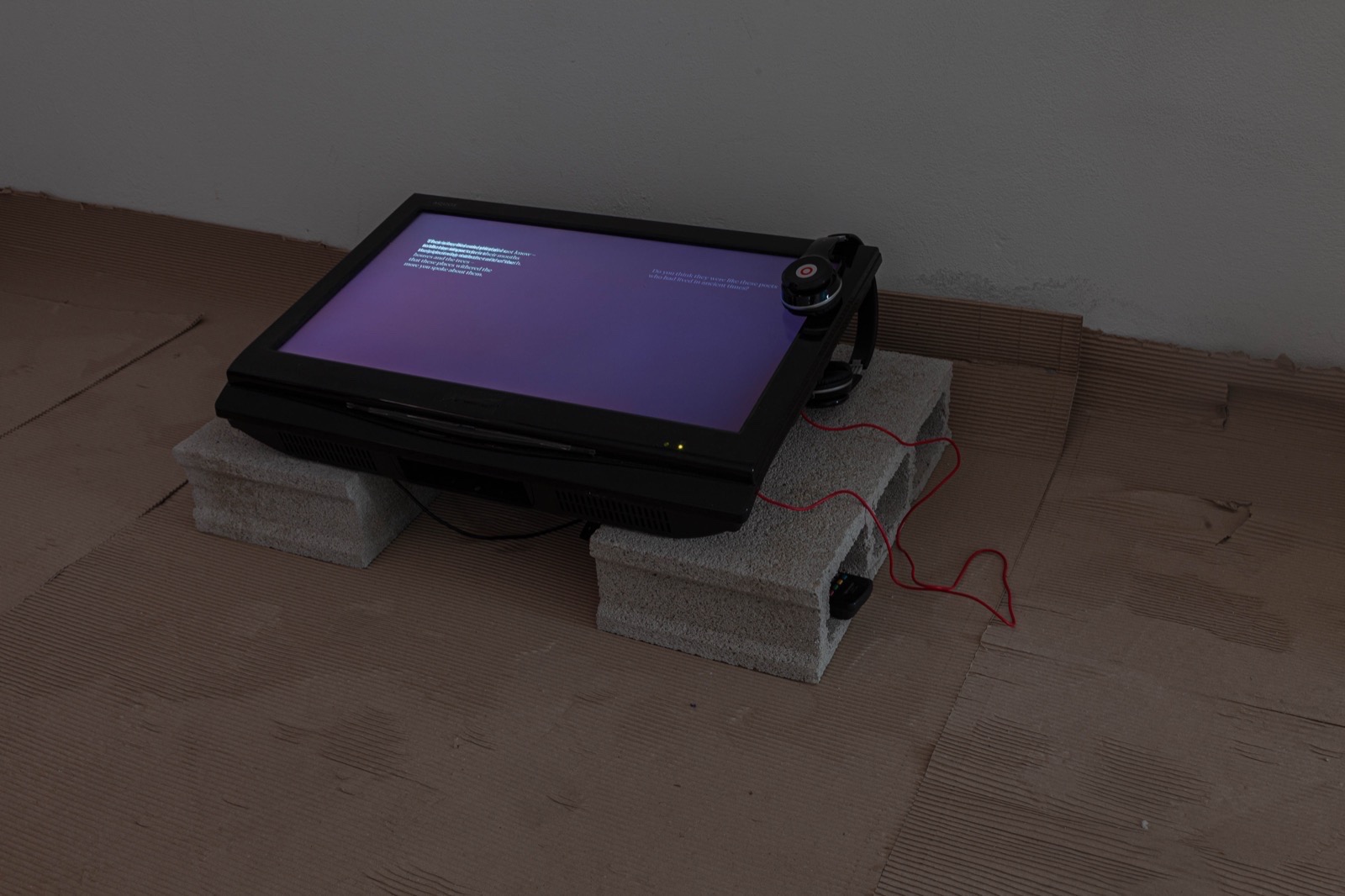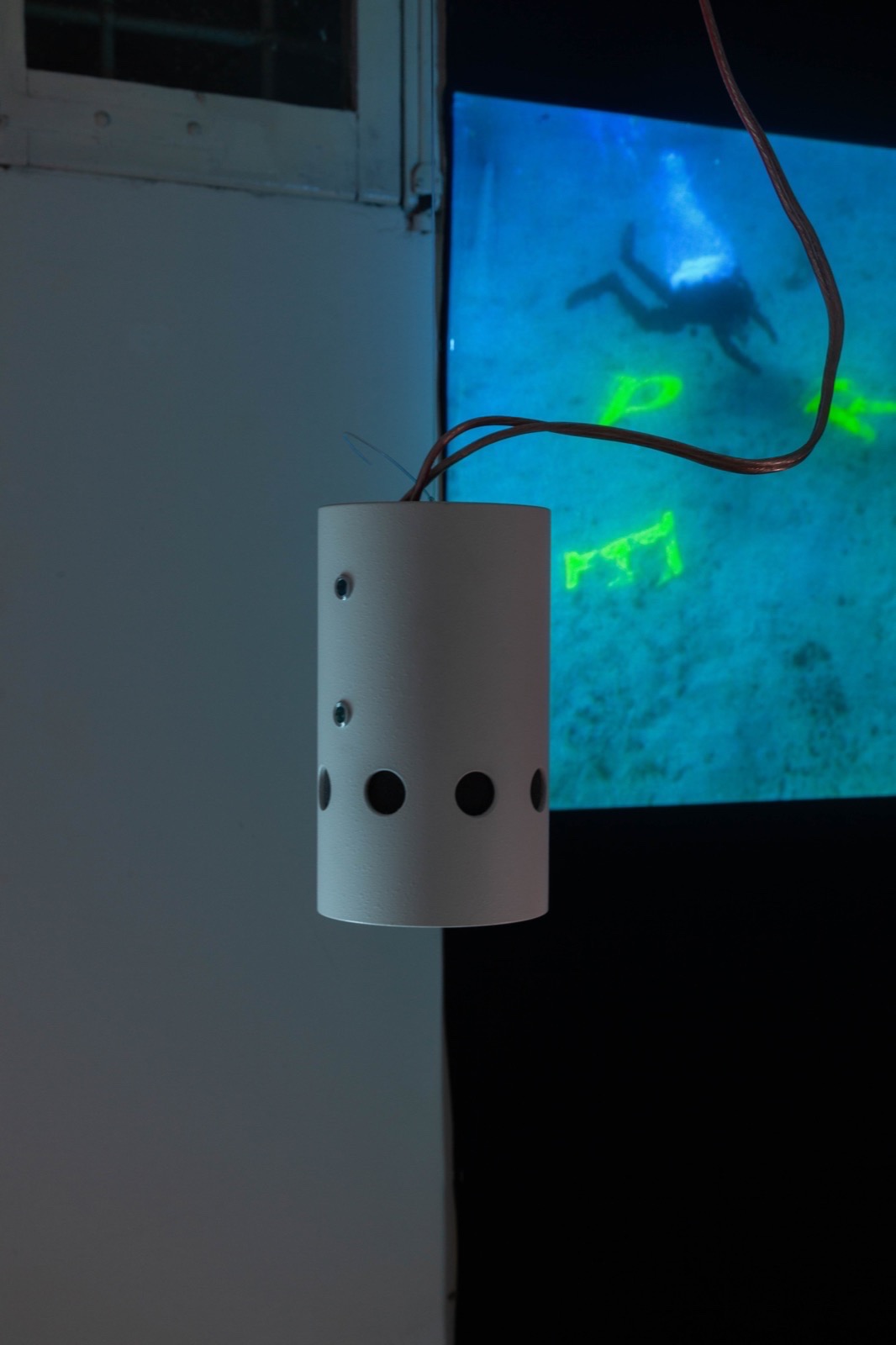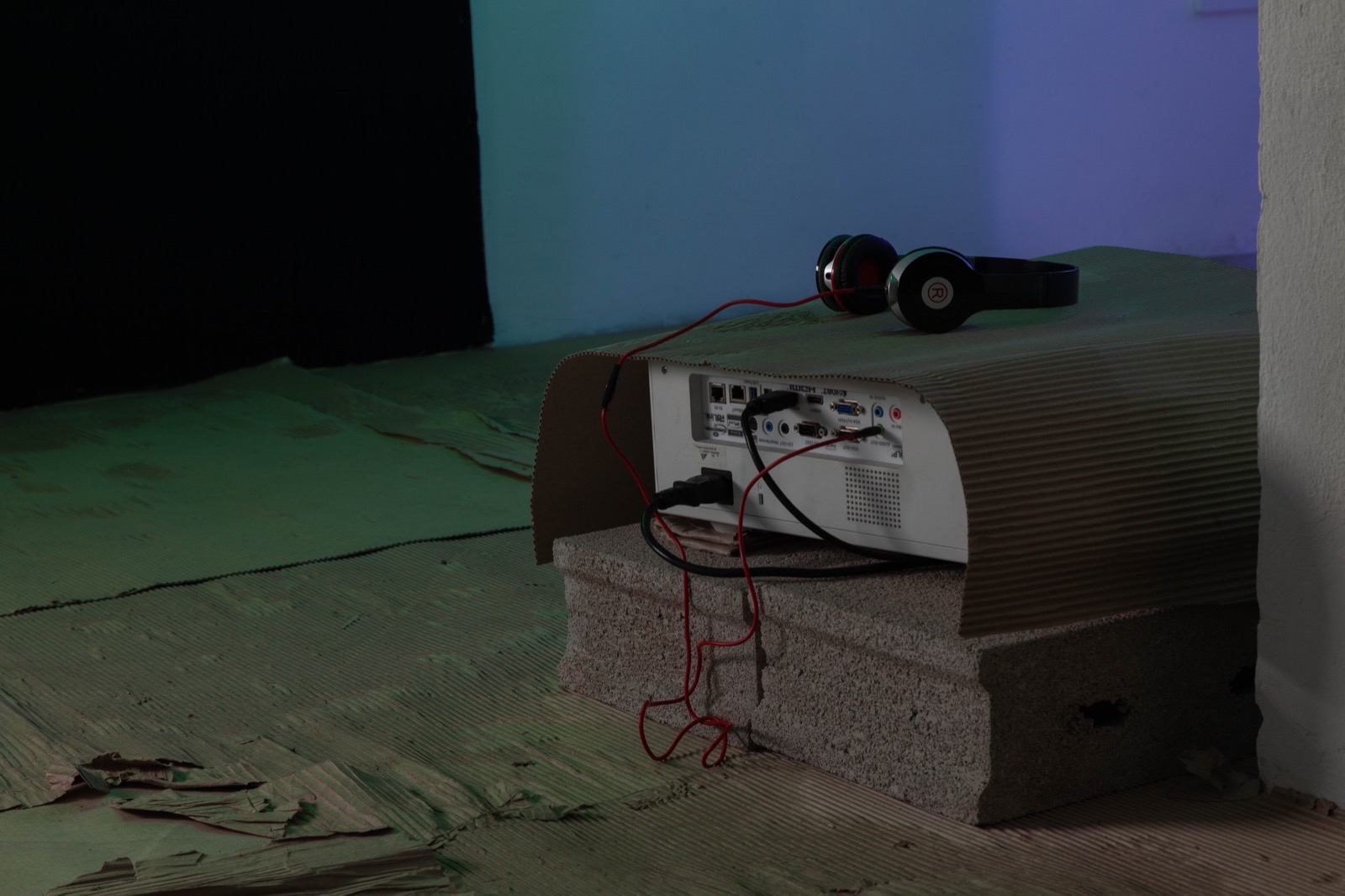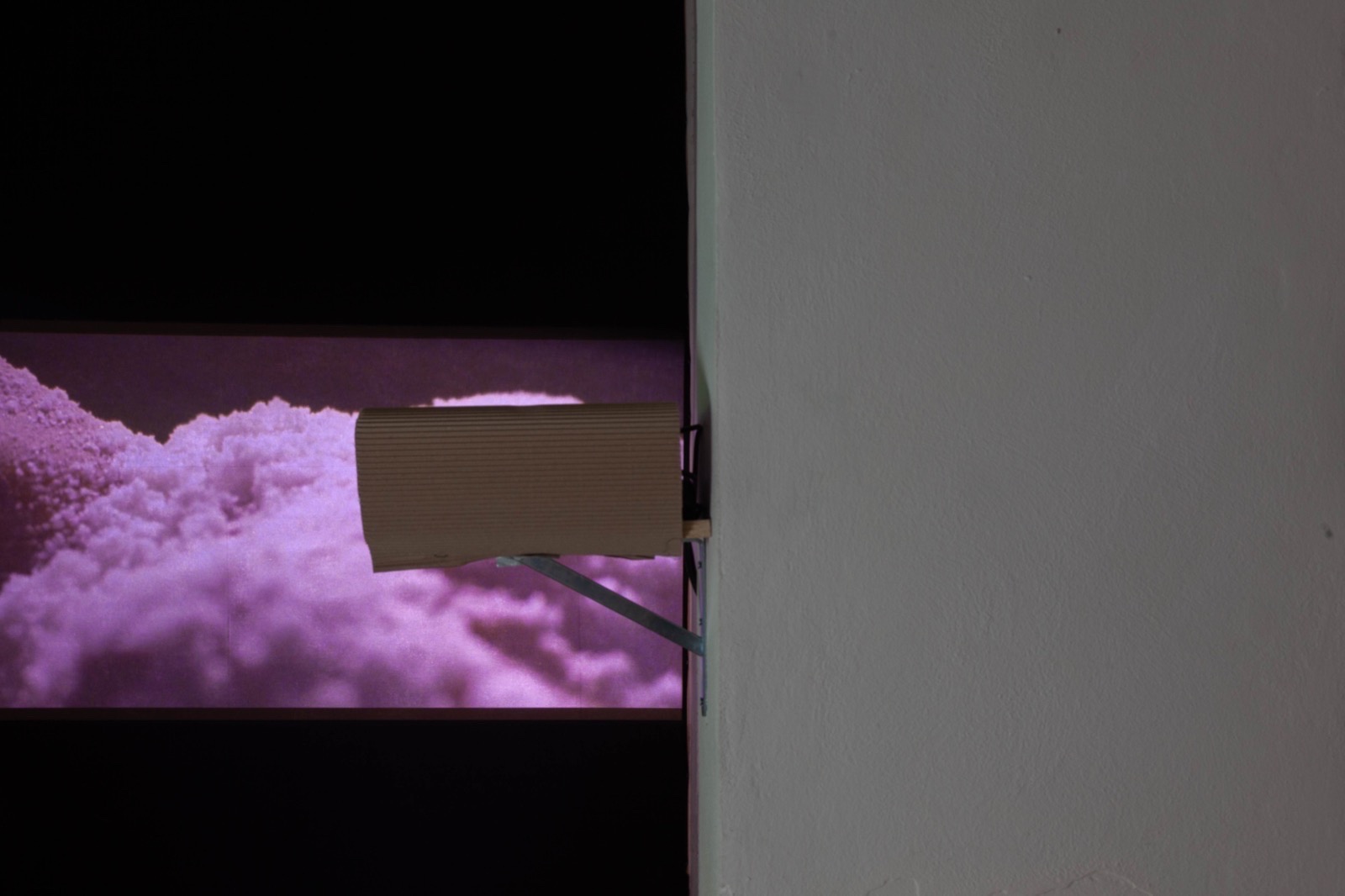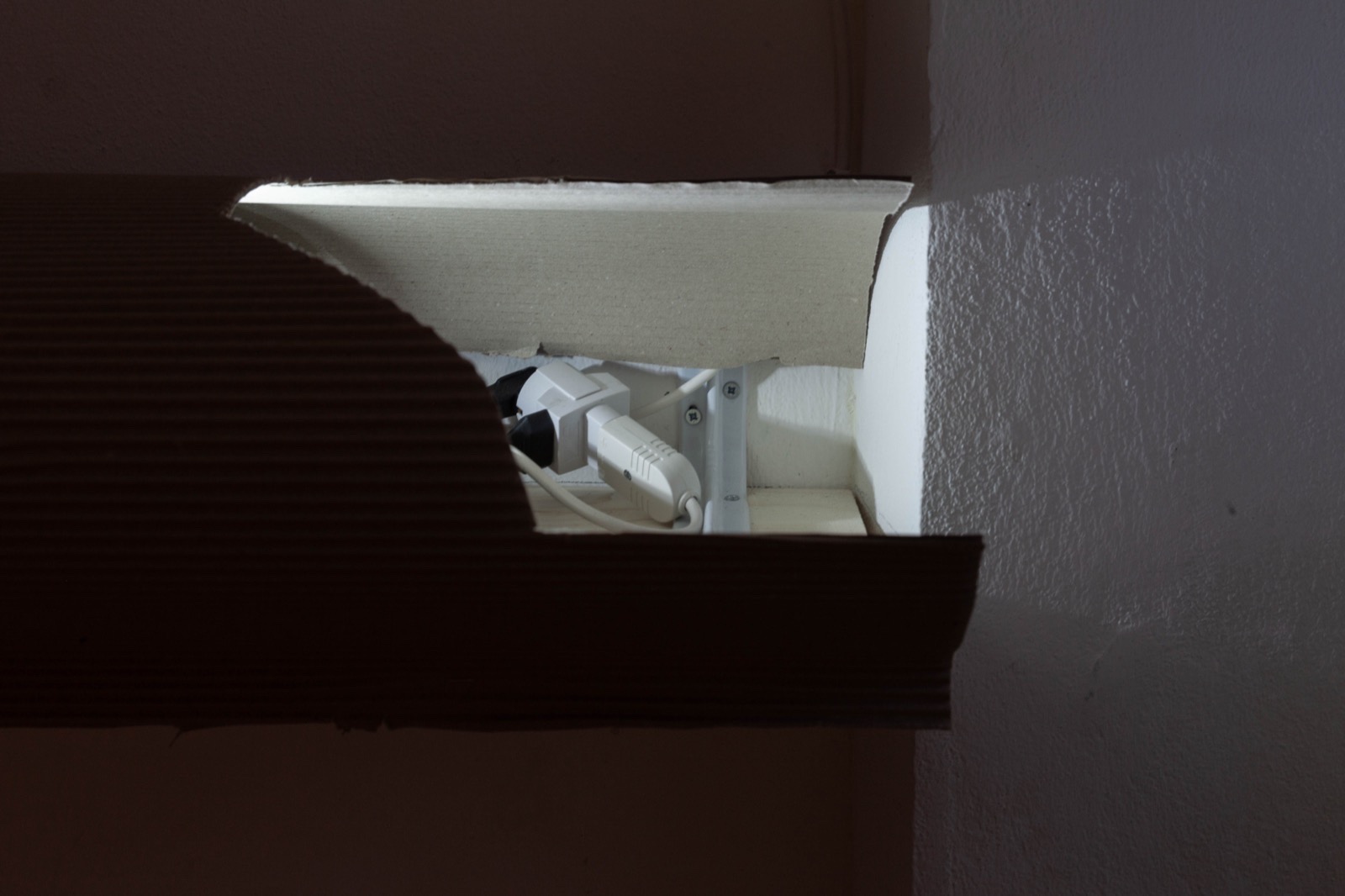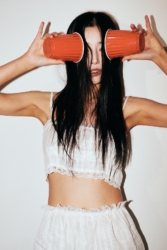Through a narrow doorway opening to a busy Bolognese street a dark, cold space unveils. In it – still gazing from the street – we can see a video of a seabed with divers swimming around carrying big yellow letters, cut in half by a wall, and hear an estranging sound of something resembling a distorted cello concerto. Deserted Island (on dropping bomb*shells) is a holistic experience in an exhibition, based on dualities and dichotomies between censorship and marketing, sound and image, politics and ecology, the East and the West, the past and the present, and eternity – and finally – between art and (harsh) reality.
Time-based media is known to be one of the most difficult artforms to present in an exhibition, especially in a fair or festival setting, where the average visiting time of an exhibition – one out of many – is lower than usual. Time-based media needs time and time needs to be earned. By fame, by force, or by successful curation. Carmen Lorenzetti and Dušan Josip Smodej, the curators of Deserted Island (on dropping bomb*shells), imagined a space where the human violence of war and terrorism is juxtaposed to the inhuman horror of the inevitable global ecological disaster. Their low-budget, but precisely constructed site-specific installation consists of six time-based media works: three videos by Raqs Media Collective, g. olmo stuppia and Genny Petrotta, and two sound pieces by Hussein Nassereddine and Stefano Cagol; accompanied by an off-site performance, A Waltz for Sarajevo, 2017-2024 (participatory performance), by the young painter Arianna Marcolin, in which visitors were invited to dance waltz in other people’s shoes, commemorating the victims of bomb blasts whose shoes are left behind at the sites of these horrors.
Upon stepping through the alluring narrow entrance, our immediate focus is drawn to Charade, 2018 (single-channel video, 8 min) by David Birkin. Projected on a small black canvas on the wall adjacent to the exhibition title, this silent video, created in collaboration with the human rights organisation Reprieve, involves over 50 actors, artists, musicians, and performers. It serves as a response to the British Prime Minister’s endeavours to conceal a covert directive permitting military intelligence agents to partake in criminal activities. Each participant in the video mimes crimes they believe intelligence agents may be authorised to commit, employing the rules of ‘charades’ to convey each syllable in silence. The video, through mainstream aesthetics, uses the language of marketing to discuss censorship.
On the opposite wall, Two Birds, Sleeping, 2022 (sound and video installation, 9 min 37 sec) by Hussein Nassereddine introduces an audio poetry piece. Here, the artist contemplates envisioning a place no longer in existence and explores how to verbalise its manifestation. Nassereddine delves into his family’s village in the South of Lebanon, ravaged by violence and political upheaval in the last century. The juxtaposition of silent imagery of Birkin and vocal narrative of Nassereddine forms a captivating duality — an image without sound, speaking; and a voice without image, drawing.
Continuing deeper into the space, an old cathode television showcases Sposare la Notte, 2022 (series of 4 short films, 31 min 18 sec), a performative project by g. olmo stuppia. The project comprises four eco-walks in public space, intertwining autobiographical experiences and artistic research in visionary synthesis. These “walkscapes” explore the aesthetics of the vast province and its impact on the territory, with Venice and Palermo serving as examples, all documented on film, opening the path from politics to ecology.
 https://www.nastymagazine.com/wp-content/uploads/2023/03/ogt-gordon-welters-laif-22142327-h.jpg
1066
1600
admin
https://www.nastymagazine.com/wp-content/uploads/2015/02/new-logo-basker-WHITE4.png
admin2023-03-23 13:11:472023-03-21 18:06:53Florentina Holzinger / The Art of Discomfort
https://www.nastymagazine.com/wp-content/uploads/2023/03/ogt-gordon-welters-laif-22142327-h.jpg
1066
1600
admin
https://www.nastymagazine.com/wp-content/uploads/2015/02/new-logo-basker-WHITE4.png
admin2023-03-23 13:11:472023-03-21 18:06:53Florentina Holzinger / The Art of Discomfort
